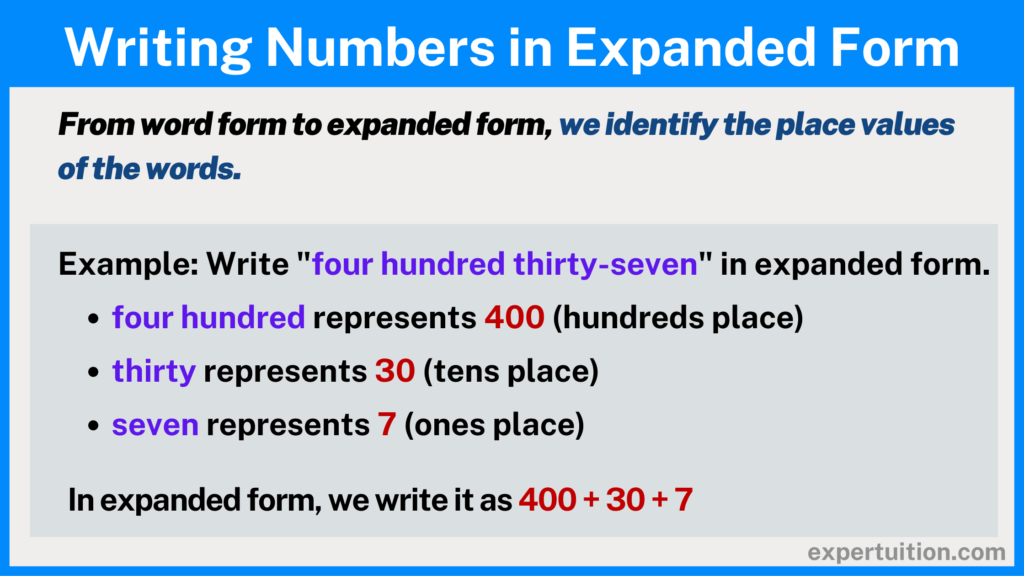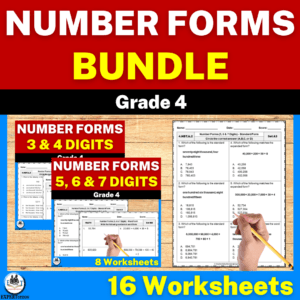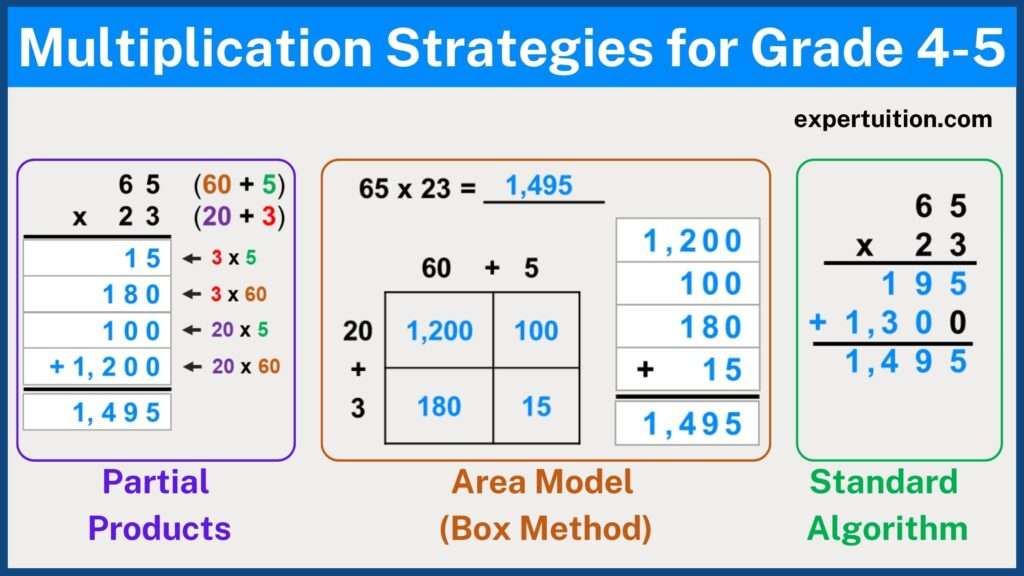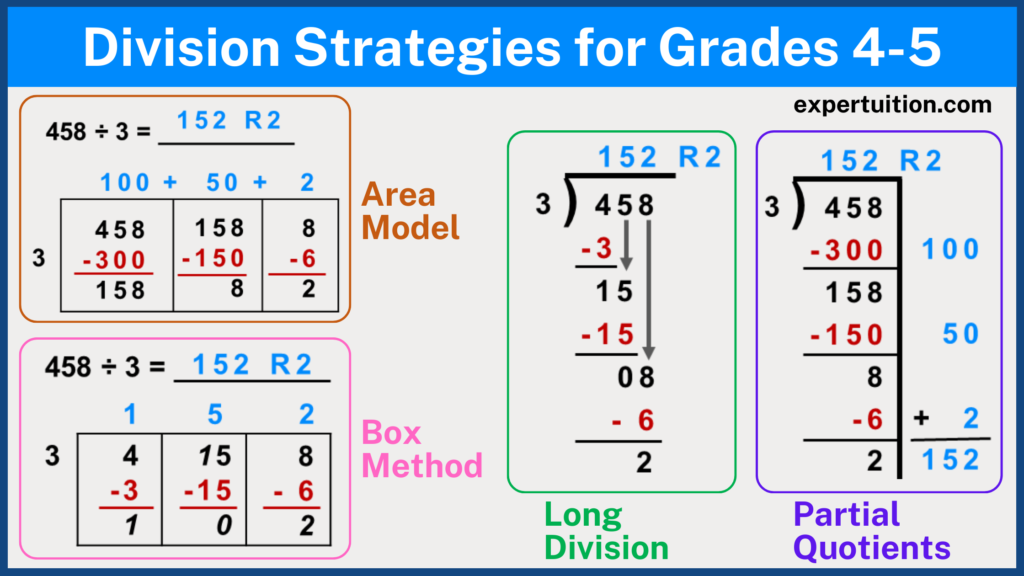
Welcome to the fascinating world of number forms! Are you ready to embark on a journey into the world of writing numbers in different forms? Whether you’re a math enthusiast, a teacher, a student, or just someone curious about standard form, word form, or expanded form, this article has got you covered!
Introduction
Numbers are like the secret codes of the universe. They allow us to quantify, measure, and make sense of the world around us.
In this article, we will explore three common ways of writing numbers: standard form, word form, and expanded form.
Get ready to dive into a world of number forms where you’ll discover how to transform digits into words and break down numbers into their special parts.
The Standard Form of Numbers

What is Standard Form?
Standard form, also known as the numerical form is the most straightforward and commonly used way of writing numbers.
In standard form, numbers are expressed using digits. They are concise, efficient, and easy to read.
In this form, each digit holds a unique place value, depending on its position. The rightmost digit represents the ones place, the next digit to the left represents the tens place, and so on.
So, every digit in standard form plays a vital role in decoding the value of a number.
The standard form is the type of number forms that makes it simple to perform arithmetic operations like addition, subtraction, multiplication, and division.
Examples of Standard Form of Numbers
Let’s look at some examples of numbers in standard form to get a better grasp of how they are written. Here are a few examples:
- 643
- 1,205
- 19,876
- 1,200,000
Notice how the digits are arranged from left to right, with commas used to separate thousands, millions, and so on. This makes it easier to read and interpret large numbers.
The Word Form of Numbers

What is Word Form?
Word form is a way of representing numbers using words. It gives numbers a voice, bringing them to life in a way that is easy for us to understand.
The word form is the type of number forms particularly useful when we want to convey numerical information in written or verbal communication.
This form of writing numbers helps strengthen our understanding of place value and helps make math more relatable and accessible.
Examples of Word Form of Numbers
Let’s take a look at some examples to understand how numbers are written in word form.
- 385 = three hundred eighty-five
- 2,517 = two thousand, five hundred seventeen
- 10,891 = ten thousand, eight hundred ninety-one
Notice how digits are replaced with their corresponding word counterparts? This creates a verbal representation of the number.
The Expanded Form of Numbers

What is Expanded Form?
The expanded form is a way of representing a number by breaking it down into its individual place values. The number is expressed as the sum of its place values.
It provides a detailed representation of how each digit contributes to the overall value of a number. This representation emphasizes the place value system.
Expanded form is a valuable tool for visualizing numbers and understanding their composition.
Examples of Expanded Form of Numbers
Let’s explore some examples to understand how numbers are written in expanded form.
- 643 = 600 + 40 + 3
- 3,250 = 3,000 + 200 + 50
- 20,478 = 20,000 + 400 + 70 + 8
By adding the place values together, we can see how a number is composed of different quantities.
Solved Examples of Writing Numbers in Different Forms
Writing Numbers in Word Form
Let’s put our number-writing skills to the test with some solved examples! In this section, we will explore how to write numbers in different forms, specifically focusing on converting numbers to word form. We’ll cover converting from both standard form and expanded form to word form.
Converting Numbers from Standard Form to Word Form

To convert numbers from standard form to word form, we assign the appropriate words to each digit that represents their place values.
Example 1: Write the number 284 in word form.
- 2 represents two hundred (hundreds place)
- 8 represents eighty (tens place)
- 4 represents four (ones place)
In word form, we write it as “two hundred eighty-four.”
Example 2: Write the number 1,256 in word form.
- 1 represents one thousand (thousands place)
- 2 represents two hundred (hundreds place)
- 5 represents fifty (tens place)
- 6 represents six (ones place)
In word form, we write it as “one thousand, two hundred fifty-six.”
Converting Numbers from Expanded Form to Word Form

To convert numbers from expanded form to word form, we express each place value in words.
Example 1: Write the number 600 + 40 + 3 in word form.
- 600 can be written as six hundred
- 40 can be written as forty
- 3 can be written as three
In word form, we write it as “six hundred forty-three.”
Example 2: Write the number 1,000 + 900 + 60 + 2 in word form.
- 1,000 can be written as one thousand
- 900 can be written as nine hundred
- 60 can be written as sixty
- 2 can be written as two
In word form we write it as “one thousand, nine hundred sixty-two.”
Writing Numbers in Expanded Form
In this section, we will explore how to write numbers in expanded form. We’ll focus on converting numbers from both standard form and word form to expanded form. Get ready to expand your number-writing skills!
Converting Numbers from Standard Form to Expanded Form

To convert numbers from standard form to expanded form, we break it down into its individual place values.
Example 1: Write the number 472 in expanded form.
- The digit 4 represents 400 (hundreds place)
- The digit 7 represents 70 (tens place)
- The digit 2 represents 2 (ones place)
In expanded form, we write it as 400 + 70 + 2.
Example 2: Write the number 6,739 in expanded form.
- The digit 6 represents 6,000 (thousands place)
- The digit 7 represents 700 (hundreds place)
- The digit 3 represents 30 (tens place)
- The digit 9 represents 9 (ones place)
In expanded form, we write it as 6,000 + 700 + 30 + 9.
Converting Numbers from Word Form to Expanded Form

To convert numbers from word form to expanded form, we identify the place values of the words.
Example 1: Write the number “four hundred thirty-seven” in expanded form.
- four hundred represents 400 (hundreds place)
- thirty represents 30 (tens place)
- seven represents 7 (ones place)
In expanded form, we write it as 400 + 30 + 7.
Example 2: Write the number “three thousand, two hundred fifty-eight” in expanded form.
- three thousand represents 3,000 (thousands place)
- two hundred represents 200 (hundreds place)
- fifty represents 50 (tens place)
- eight represents 8 (ones place)
In expanded form, we write it as 3,000 + 200 + 50 + 8.
Writing Numbers in Standard Form
Let’s continue our exploration of number forms with solved examples! In this section, we’ll focus on writing numbers in standard form. We’ll cover converting numbers from both expanded form and word form to standard form.
Converting Numbers from Expanded Form to Standard Form

To convert numbers from expanded form to standard form, we add up the individual place values.
Example 1: Write the number 300 + 80 + 5 in standard form.
- 300 + 80 + 5 = 385.
In standard form, we write it as 385
Example 2: Write the number 5,000 + 200 + 10 + 6 in standard form.
- 5,000 + 200 + 10 + 6 = 5,216.
In standard form, we write it as 5,216.
Converting Numbers from Word Form to Standard Form

To convert numbers from word form to standard form, we find the place values of the words and add them up.
Example 1: Write the number “six hundred seventy-three” in standard form.
- six hundred represents 600
- seventy represents 70
- three represents 3
- 600 + 70 + 3 = 673.
In standard form, we write it as 673.
Example 2: Write the number “three thousand, nine hundred twenty-five” in standard form.
- three thousand represents 3,000
- nine hundred represents 900
- twenty represents 20
- five represents 5
- 3,000 + 900 + 20 + 5 = 3,925.
In standard form, we write it as 3,925.
Real-Life Examples of Writing Number in Different Forms
Let’s consider some real-life scenarios where we can apply these different forms of writing numbers. By examining these examples, you’ll see how numbers play a role in our everyday lives and how they can be written in various forms like standard form, word form, and expanded form. Let’s dive in!

Reading a Book
While reading a thrilling adventure book, you come across a sentence that describes the number of treasure chests hidden on a deserted island. The sentence reads, “There were seven hundred twenty-three treasure chests buried in the sand.” Here, the number “seven hundred twenty-three” represents the quantity of treasure chests in word form.
Picture yourself reading a book about animals. The text describes a group of birds soaring through the sky. The sentence reads, “There were thirty-seven birds flying above.” In word form, we express the number 37 as “thirty-seven”, making the number more relatable and accessible.
Shopping
Imagine you are at the grocery store with your family. You have a shopping list that includes items with different prices. As you pick up each item, you notice the prices written in standard form, such as $2 or $10. These numbers represent the cost of the items in standard form.
Suppose you purchase items worth $5,983 from a store. The price tag would show the amount in standard form as “$5,983.” In word form, you can say “five thousand, nine hundred eighty-three dollars.”
Money Management
Budgeting and financial planning frequently require writing numbers in different forms. For example, if you have a monthly income of $4,500, it is written in standard form as “$4,500” and in word form as “four thousand five hundred dollars.”
Bank Transactions
When dealing with bank transactions, you might encounter large sums of money. If you have a balance of $1,250,000, it is written in standard form as “$1,250,000” and in word form as “one million, two hundred fifty thousand dollars.”
Population Statistics
Imagine you are researching population data. If a city has a population of 500,000 people, you would express it in standard form as “500,000.” In word form, it becomes “five hundred thousand.”
Imagine you read in a newspaper that a city’s population is 1,250,000 people. In standard form, we write it as 1,250,000. This form allows us to express large numbers using digits, making it convenient for calculations and comparisons.
Scientific Notation Conversion
Scientific notation is often used in scientific and mathematical contexts to represent very large or very small numbers. When converting numbers from scientific notation to standard form, we can express them in a more familiar and understandable format. For instance, the number 3.2 × 10^6 in scientific notation can be written as 3,200,000 in standard form.
Strategies to Master Writing Numbers in Different Forms
Writing numbers in different forms can be an exciting and valuable skill to possess. It requires practice and a solid understanding of number concepts. In this section, we will explore some strategies to help in converting numbers between standard form, word form, and expanded form. Let’s dive in and discover these strategies!

Understand the Place Value System
A solid understanding of place value is the foundation for writing numbers in different forms. Place value refers to the value of a digit based on its position within a number.
It is important that students grasp the significance of each position within a number, such as ones, tens, hundreds, thousands, and so on.
By understanding place value, one can accurately express numbers in their different forms.
Break Down Large Numbers
When dealing with larger numbers, break them down into smaller groups to make them easier to handle.
Practice decomposing numbers both verbally and in written form. This process will help visualize the specific value contributed by each digit, leading to a deeper understanding of number composition.
Use Visual Aids
Visual aids can greatly enhance the learning experience when it comes to writing numbers in different forms.
Consider using charts, grids, or manipulatives to visually represent the place values of numbers.
These visual tools can help visualize the composition of a number and make it easier to convert between forms.
Relate to Real-Life Examples
Connect the concept of writing numbers in different forms to real-life situations to make them more relatable and meaningful.
Relate it to scenarios where numbers play a role, such as counting objects, measuring quantities, or discussing prices. For instance, when counting objects, express the total in word form, expanded form, and standard form.
Practice with Small Numbers
Start with smaller numbers and gradually work your way up to larger ones. Practice writing numbers in different forms using simple examples.
This approach helps build confidence and familiarity with the concept before tackling more complex numerical expressions.
Regular Practice
Regular practice is key to mastering the skill of writing numbers in different forms. Work on converting numbers between standard form, word form, and expanded form using various examples.
Practice with engaging worksheets or other fun activities, such as number puzzles and interactive games to make practice enjoyable.
Practice Worksheets: Writing Numbers in Different Forms
If you are a teacher or a parent looking for engaging worksheets for your students or child to practice writing numbers in different forms, then my differentiated and engaging number forms worksheets will be perfect for you.
You can get these worksheets from my TPT store or my WooCommerce shop.
Conclusion
In this article, we have explored the world of number forms, learning how to write numbers in standard, word, and expanded forms.
Standard form presents numbers in a concise format, while word form brings them to life through words. Expanded form enables us to explore the individual components that make up a number.
These different forms allow us to communicate numbers effectively, understand their structure, and solve problems.
So, practice writing numbers in different forms regularly to strengthen your skills. With this knowledge, you can confidently tackle mathematical challenges and appreciate the beauty of numbers in everyday life. Happy number writing!






